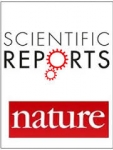Two-dimensional (2D) materials remain highly interesting for assembling three-dimensional (3D) structures, among others, in the form of macroscopic hydrogels. Herein, we present a novel approach for inducing chemical inter-sheet crosslinks via an ethylenediamine mediated reaction between Ti3C2Tx and graphene oxide in order to obtain a reduced graphene oxide-MXene (rGO-MXene) hydrogel. The composite hydrogels are hydrophilic with a stiffness of ∼20 kPa. They also possess a unique inter-connected porous architecture, which led to a hitherto unprecedented ability of human cells across three different types, epithelial adenocarcinoma, neuroblastoma and fibroblasts, to form inter-connected three-dimensional networks. The attachments of the cells to the rGO-MXene hydrogels were superior to those of the sole rGO-control gels. This phenomenon stems from the strong affinity of cellular protrusions (neurites, lamellipodia and filopodia) to grow and connect along architectural network paths within the rGO-MXene hydrogel, which could lead to advanced control over macroscopic formations of cellular networks for technologically relevant bioengineering applications, including tissue engineering and personalized diagnostic networks-on-chip.



